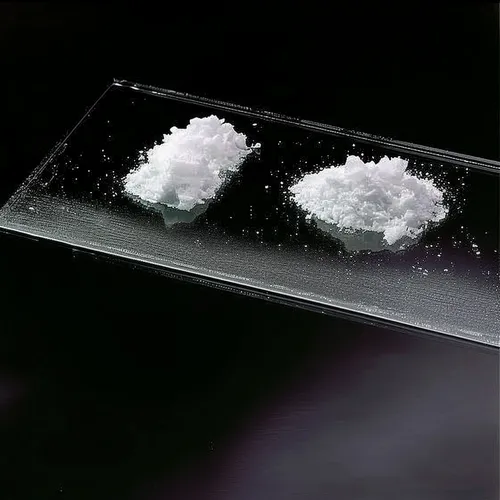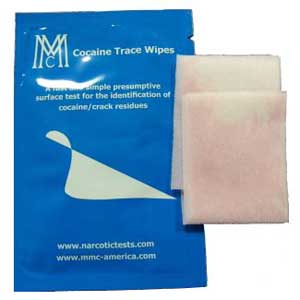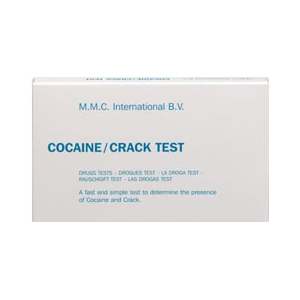Cocaine is one of the most commonly used drugs of abuse in the UK. In fact, Brits snort more cocaine than any other country in Europe. (In this country in 2017-2018, 2.6% of adults used powdered cocaine). Because the drug is everywhere nowadays, we have seen an increased demand for cocaine identification tests. Owners of businesses, particularly pubs and clubs, are more than aware of the need to monitor illegal drug use on their premises.
Cocaine is a drug that is normally snorted from a flat surface. In public places this can mean that the toilets of bars and clubs are often used to take the drug. This means that we often get requests from business owners who are looking for a way of identifying the white powder residue they have found on their premises. Parents and family members also contact us to find out if the white powder they have discovered at home is in fact cocaine, or a similar drug of abuse.
What Does Cocaine Smell Like? How Does It Taste?
We’ve all seen detective movies where the main investigator discovers a white powder. He then tastes or smells the power and announces it as cocaine! This kind of activity is great in films but dangerous in real life, so we cannot recommend testing for drugs in this way.
Cocaine normally has a sweet floral scent, but it can also smell metallic and chemical-like. This is because a large number of chemicals solvents that are utilised in the cocaine extraction process.
Cocaine often has a bitter taste. One reason for a person putting cocaine into their mouth is to check the purity, as opposed to the taste of the cocaine. Generally, an individual will rub cocaine on their gums when proofing the purity.
The scent of cocaine can vary depending on the chemicals used in its production and how pure the final product is. High-quality cocaine, for example, tends to have a more subtle, floral aroma compared to lower-grade versions cut with harsher additives. Some people describe a slight numbing sensation in their nose after smelling cocaine, which is caused by the drug’s anaesthetic properties.
Interestingly, drug-sniffing dogs are trained to detect the odour of methyl benzoate, a chemical byproduct of cocaine’s manufacturing process, rather than the smell of the drug itself. This allows them to consistently identify cocaine regardless of purity or added scents intended to mask its presence.
It’s important to note that while cocaine’s smell may be distinct to some, it is not a reliable method for identifying the substance. Many other white powders, both legal and illegal, can mimic cocaine’s appearance and odour. The only surefire way to determine if a substance is cocaine is through proper testing, such as with wipes and ampoules described here.
Two Ways To Identify Cocaine Residue
At present, we offer two simple and easy methods of identifying cocaine. The first method involves wiping a surface with a cocaine surface swab. The second method requires the powder to be mixed into a small ampoule of chemical identifier.
Cocaine Wipes
A surface wipe for cocaine is simple to use and will tell you within minutes if the powder residue that you have found is cocaine or not. Cocaine wipes work even when there are no visible traces of the drug remaining on the surface. These type of test can be used at home or in public places.
To use the cocaine wipe, you simply swab the swab the surface that you suspect is contaminated. If cocaine is found, the wipe changes colour to blue, even if only a tiny residue of the drug is present and may not be visible to the naked eye.
Cocaine wipes are particularly useful for landlords of licensed bars and pubs. They can be liable for prosecution if drug use is found to be taking place on their premises. These cocaine wipes are an easy to use & cost effective way of policing toilets and other public areas in any drinking establishment.
Cocaine Identification Ampoules
Often used by police to identify drugs, these tiny ampoules use a chemical reaction to identify if a suspect powder is actually a drug of abuse. These tests are often sold in kits that identify single or multiple drugs using just one ampoule. Popular drug identification tests include cannabis, cocaine and party drugs. Drug identification ampoules can also test “legal” highs such as spice (synthetic cannabis) and mephedrone (bath salts).
The cocaine identification test is simple enough to use. A small sample of the suspect powder is mixed with a tiny swab into the ampoule. You will then observe a colour change if the powder residue is actually cocaine.
Where Can You Use Cocaine Identification Tests?
These types of test can be used anywhere. As long as the instructions are precisely followed, the results are extremely accurate. This is why these types of tests are commonly used by police and local authorities. All drug testing kits are supplied with easy to follow instructions. Cocaine wipes are also supplied with latex gloves.
Next Day Delivery On Cocaine Tests
Zoom Testing are specialists in all areas of cocaine drug testing and are suppliers of testing kits to many UK customers that include NHS Trusts, GPs and Prisons. If you have any questions concerning cocaine identification or the wider subject of cocaine drug testing, please do not hesitate to contact us.
Photo: “Cocaine” by Anthony Cunningham for Zoom Testing
Zoom Testing is a leading UK drug testing company and a supplier of Drug Test Kits.







